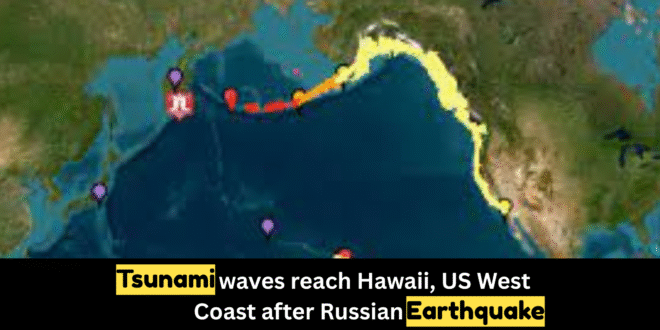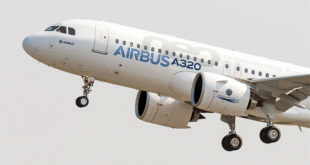On July 30, 2025, a powerful magnitude 8.8 earthquake struck off the Kamchatka Peninsula in Russia, triggering tsunami warnings across the Pacific—including in Hawaii, California, Oregon, Washington, and parts of Japan.
1. Earthquake & Tsunami Alerts
Seismologists confirmed the quake as one of the strongest in the region since 1952, occurring at a relatively shallow depth of approximately 19 km, which amplified seismic waves and triggered tsunami alerts throughout the Pacific Basin. Alerts initially covered Hawaii, the U.S. West Coast, Alaska, Japan, and parts of South America.
2. Hawaii Experiences Minor Waves
In Hawaii, waves measuring between 4 and 6 feet (1.2 to 1.7 meters) were recorded in locations including Kahului (Maui) and Hilo. While these events were impactful, they caused only minor flooding, with reports indicating no serious damage or injuries. Tsunami sirens were activated in areas like Oahu—some residents noted they hadn’t heard them in over a decade.
3. West Coast Impact & Disruptions
On the U.S. West Coast, officials reported modest tsunami waves: approximately 4–5 feet in Northern California (notably Crescent City), 1–2 feet in Humboldt Bay, and smaller surges down to San Francisco Bay and Port San Luis. Coastal advisories urged people to stay off beaches and harbors while waters stabilized. Airline operations at major airports—Honolulu, Los Angeles, San Francisco, and Seattle—faced delays linked to the warnings and security precautions.
4. Authorities Respond & Wave Monitoring
U.S. Homeland Security Secretary Kristi Noem declared that “the threat of a major tsunami hitting the U.S. has passed completely” once wave data confirmed subsiding activity. Meanwhile, Hawaii Governor Josh Green expressed relief that, so far, no consequential waves had damaged infrastructure, though officials continued to monitor conditions until issuing a full all‑clear.
5. Human Stories: Cruise Chaos & Community Aid
In Hawaii, panic-stricken scenes emerged as the Pride of America cruise ship departed early, stranding passengers in Hilo amid confusion and poor communication. In a compassionate gesture, Oprah Winfrey opened her private Maui road to support local evacuation efforts, coordinating with law enforcement and FEMA to admit vehicles in batches and ease traffic strain.
FAQs
Q: What triggered the tsunami in Hawaii and California?
A: A massive magnitude 8.8 earthquake off Russia’s Kamchatka Peninsula generated powerful displacement of ocean water, leading to tsunami wave propagation across the Pacific.
Q: How high were the tsunami waves in Hawaii and on the West Coast?
A: In Hawaii, waves reached 4–6 feet (1.2–1.7 m). On the U.S. West Coast, Northern California saw up to 4–5 feet, Humboldt Bay had ~1–2 feet, and smaller surges hit southern California bays.
Q: Was there any serious damage or loss of life?
A: No casualties or serious injuries were reported in Hawaii or on the West Coast. In Russia, minor injuries occurred, but no fatalities, thanks to effective emergency systems.
Q: How long did the tsunami threat last?
A: The tsunami warning was issued on July 30, downgraded to an advisory within hours, and then fully lifted later that day or early the next, once wave activity subsided and safety conditions were verified.
Q: How are authorities improving preparedness?
A: The event underscored the value of early warning systems, sirens, cruise‑ship coordination, and community aid efforts. Leaders highlighted the importance of readiness and clear communication during major Pacific seismic events.




